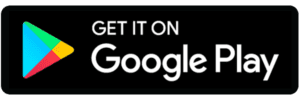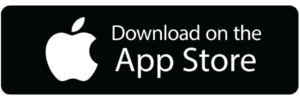Think about how much time you’ve spent visiting your healthcare professionals throughout your life: check-ups with your family doctor (if you have one, that is), the sudden visits to the emergency room or urgent care, the specialist appointments.
Now consider this: 99% of healthcare happens in the home.
You read that right.
The problem is our healthcare system doesn’t take that reality into account. Patients aren’t given the knowledge, power or tools they need to effectively manage their health at home, on their own, where — let’s face it — most of our healthcare happens. And for patients managing chronic, complex health conditions—which is true for more than 20%—it means they’re often left confused, overwhelmed and frustrated.
I know this because I’ve seen it constantly over my 26-year career in the healthcare system, first working as a dietitian in the public system and later as owner and operator of my own private clinic, Revive Wellness. The system is inefficient and overburdened, with ballooning waitlists that only seem to grow. At the same time, healthcare professionals are left with little choice but to reduce the time they spend providing direct care to their patients.
When your time with each patient continues to shrink, everything suffers: the quality of care, the outcomes, and, for both patients and professionals, faith in the system. Instead of proactively helping people manage their health, we’re left just to put out fires.
I spent years wracking my brain to figure out how to break this cycle. I didn’t get into healthcare to be a firefighter. I wanted to help people improve their health and take control of their lives. But I had found myself on this hamster wheel: patients would wait months to see me, they would spend not more than 15 minutes with me as I tried to figure out how best to help them, and then I would send them away with some handouts or a few website resources. It felt hopeless.
And then I realized there was a way out— by leveraging the power of technology, I could improve my success rate, reduce my wait times and increase my efficiency. More than that, I could help my patients take control of their health, engaging them in the process and giving them agency and insight into their lifestyle choices to help them improve their outcomes. It’s why I launched My Viva Plan, which allows people to take charge of their life, teaching them to measure, manage and understand how their choices can impact their health. Together with my team, we built a powerful program that increases efficiency, improves outcomes, and reduces the pressure on the system—three major problems healthcare professionals and their patients are struggling with.
As a profession, healthcare is often wary of technology and what its introduction to clinical settings will mean for patient care. But I’ve seen the power it holds and the ability it has to help us do our jobs better. Technology can be a completely asynchronous interface through which we transfer evidence-based knowledge to our patients, empowering them to effectively manage their health conditions at home, where healthcare is most often taking place.
Technology can allow us to automate the mundane, such as building a personalized nutrition plan and allows professionals to spend more time with patients engaging in probing conversations and complex critical thinking that help patients. And when deployed effectively, technology has the power to create greater equity within our system, which currently leaves many rural and remote communities at a disadvantage because of a lack of access to specialist care. Technology like My Viva Plan can help bridge the many existing gaps, ensuring people everywhere have consistent access to reliable information and how to manage their health data and symptoms.
Imagine a patient living with high blood pressure, high cholesterol and diabetes who, through effective technology, can learn to properly measure their symptoms every day, can track trends, and is given a tailored nutritional plan targeted specifically for their needs. Not only would this patient feel more empowered, but when they do visit their healthcare professional, they’re armed with objective accurate information that can help ensure they receive better care faster.
As an industry, we all need to be open to change. If there’s one thing the pandemic showed us, it’s that we have the ability to pivot quickly if we need to. And we need to. Our healthcare spending continues to increase, but our outcomes continue to lag. Something’s got to give. We must be brave enough to try something different because the status quo isn’t working.
By Loreen Wales,
Founder & CEO at My Viva Inc.



